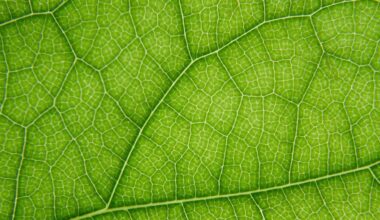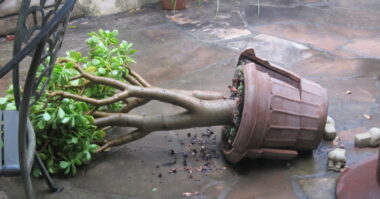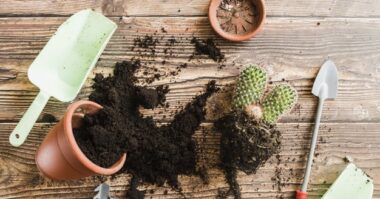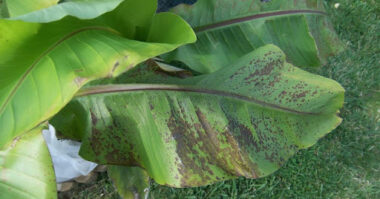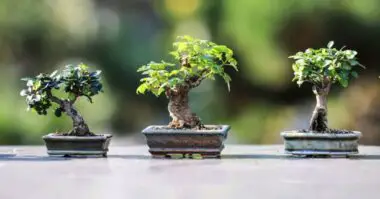How to sanitize a humid environment with the help of plants and thus prevent mold? Plants, as everyone knows, need water, some of them are great natural moisture absorbers.
They are an ideal choice to eliminate unpleasant odors and mold associated with a very humid room. They will also help prevent the development of bacteria and parasites that are harmful to your health.
Contents
What is mold?
House mould develops as a result of the presence of humidity, a temperature between 35 and 104 °F as well as the presence of spore. These spores are present in any home, so you should try to have a home with as little humidity as possible, as well as ventilate your home as often as possible.
Why do mold appear in my home?
Mould requires several elements in order to propagate: humidity, an adequate temperature and an organic food source (fruit, clothing, plaster…). It also needs mould spores, which are constantly present in the air.
You can therefore only influence the humidity and temperature of your home to counter the arrival of mold, it is already more than enough!
5 plants that help dehumidify
Boston fern
The Boston fern is a popular houseplant that grows well in very humid environments. In addition to absorbing moisture from the air, it also balances various humidity levels to make your home more comfortable, making it a perfect choice for a kitchen or bathroom.
It also has excellent unpolluting qualities. It absorbs formaldehyde and xylene very well, due to a fairly high water absorption/rejection cycle. The variety Nephrolepis exaltata “Bostoniensis” comes in 1st position to absorb formaldehyde (1863 micrograms/hour of formaldehyde absorbed in an enclosure) on a list of 40 plants tested by NASA. It is the ideal plant to limit the appearance of mold in your home!
Indirect sunlight and moist soil are all a Boston fern need to survive in your home. Beware; if your air gets a little dry during the colder winter months, you may need to spray it to prevent the plant from perishing.
Spider plant
The Hairy Clorophyton also called Spider Plant has gained popularity as a houseplant for its impressive appearance and ease of maintenance. The gracefully arched leaves make it elegant, but that’s not all it offers. What sets it apart is its ability to survive in conditions of low light and neglect. It also eliminates up to 90% of the harmful formaldehyde in the surrounding air.
If excess humidity in your home can make everything sticky and clammy and increasing humidity never makes you feel better, planting these dehumidifying plants in combination with other moisture-reducing solutions can be a great idea. They will also purify the indoor air in your home, which will help you get a good night’s sleep and stop the appearance of mold.
Tillandsia
The Tillandsias or “daughters of the air” definitely have a revealing name that underlines their action on the ambient air and also because they can thrive without a root system and without a lot of direct sunlight, which allows them to live easily indoors.
Moreover, they can live off the humidity and nutrients in the air by absorbing them through their leaves. In front of a bright window, to receive lots of filtered sunlight is a good option, watering should be done at least two to three times a week. If the plant is under watered, the leaves will become more and more concave than they are naturally.
NOTE: Not all types of plants will solve problems if you have too much moisture in your home, but they can help with a persistent problem. Most plants actually release more moisture into the air, so if too much indoor humidity is a problem for you, change the type of plants by a few tillandsias.
Climbing ivy
This plant can eliminate the airborne moulds usually found in humid places. One advantage of English Ivy is that it can be planted in a hanging pot and placed higher up in the room, close to the ceiling, absorbing rising moisture, and at the same time, you don’t have to worry about dropping it.
The maintenance of this plant is simple because it does not need much sun. Just keep the soil of the plant moist, and although it grows slowly at first, it should thrive.
Dwarf palm tree
Palms thrive in the more tropical and humid regions of the world and also absorb some moisture through their leaves, and the dwarf palm is no exception.
Compared to other palms, dwarf palms can survive in less light, making them ideal for a domestic environment; however, they can grow several centimeters if placed in brighter locations. Keep the soil of this plant relatively moist to help it thrive. Also, like the peace lily, a dwarf palm will help you purify your indoor air.
Is mold dangerous?
Mould on your walls can cause damage to your apartment, but also to your health. Indeed, the dangers of this toxin can go as far as creating respiratory problems (asthma), allergic reactions or fungus.
It is therefore important to remove all traces of it in your house or your joints so that it does not spread. It is even more important to install plants that absorb moisture, since it is the main factor in the appearance of mold.

